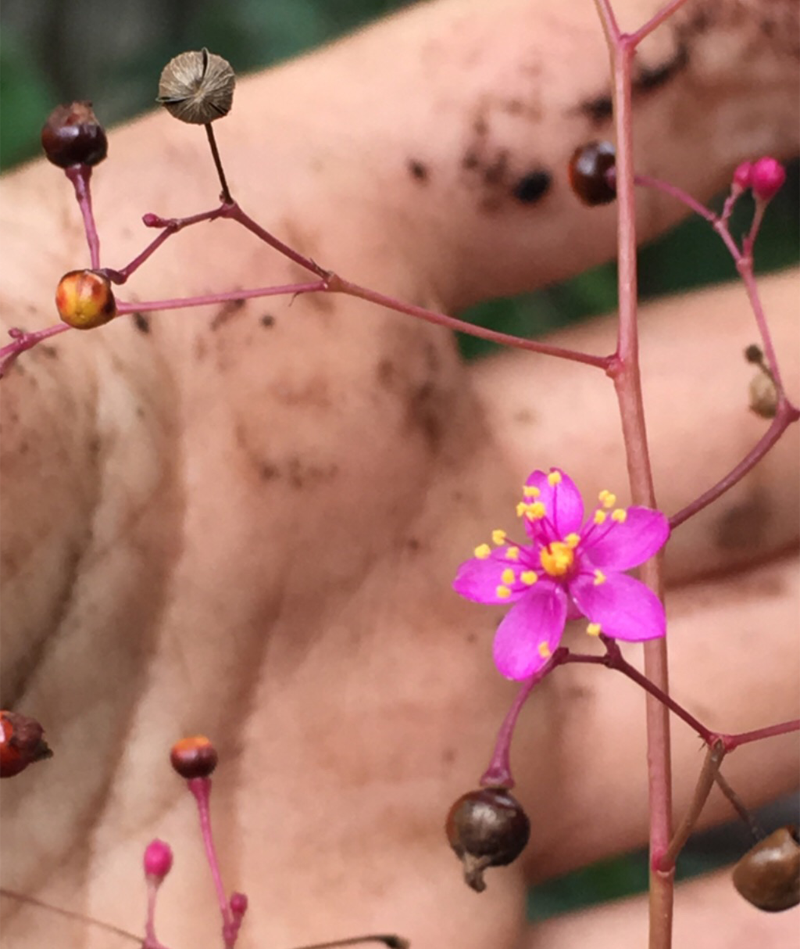
Last week I was in a therapy session and the topic of what I know about plants came up. The therapist asked me where I carry knowledge about plants in my body. Where I feel it. My “body of knowledge,” so to speak.
While I understand that our bodies hold experiences, I’d never thought about knowledge in that way before. It made me realize, once again, that I put a lot of emphasis on the cerebral and that I have spent a lifetime imagining that everything I know is held mostly in my brain. It’s as if somehow I’m just a computer and there’s a hard drive in there storing information.
But that’s not accurate. I knew it the second the question was asked. I carry knowledge in my body in ways that go unrecognized, and the realization made me see in an instant how much our culture undervalues the many ways of knowing that our human bodies are capable of in favour of only one type. It made me see how much I have undervalued my own complex ways of knowing and how my body has been there supporting me as best it could even when I was placing all of my value in what’s inside my head.
So then I thought about my hands. I’m a hand talker. I gesticulate wildly when I talk. I have believed for a while now that I do my best writing when the words come from my fingers more than my brain. But it’s not just my brain connecting with my fingers or my mouth. How we experience the world and where we store the information we accumulate is a whole body experience. Several months ago, my therapist, who practices Somatic Experiencing, explained that the way my hands communicate are my body speaking to me as much as to other people. They are a place of support and also a way of knowing.
I touch almost every plant I meet. Sometimes this has come with consequences and I’ve learned to be a bit more careful about touching new botanical friends. Can plants teach us about boundaries? I think so. They too have ways of knowing that go beyond the brain = computer way we tend to view knowledge and experience (see What a Plant Knows) and have ways of communicating if we know how to listen. As I walk through the garden, I continuously touch the plants that I know. This tactile body action is not just a way of knowing, but a way of remembering. I grow many wonderfully scented plants, and so I touch and then bring my hand up to my nose to smell. I repeat this action absent-mindedly about a million times every growing season. I miss it terribly during the winter, which is why I always overwinter a few plants with soft, fragrant leaves near to my work desk.
This week I am thinking about other places in the body where knowing about plants is experienced and held. In the heart I suspect. The gut. The nervous system. Probably others I haven’t figured out yet…
This is so good. I haven’t thought about holding knowledge in my body, though I have come to know answers, feelings, ideas in my body. I love the acknowledgement of touching everything as you move through the garden. I do this exact thing. I’m going to think more about this while in the garden today. Thank you. xxo
Love this way of thinking about things.
What kind of plants do you overwinter? Having a bit of the garden to get through the dark days seems lovely.
I overwinter far too many to list and it changes from year-to-year, but some of the best to keep around for texture and scent are scented pelargoniums aka scented geraniums because many smell wonderful and varieties such as ‘Apple’ and ‘Nutmeg’ have soft, velvety leaves. I also enjoy cardamom as a houseplant for this reason.